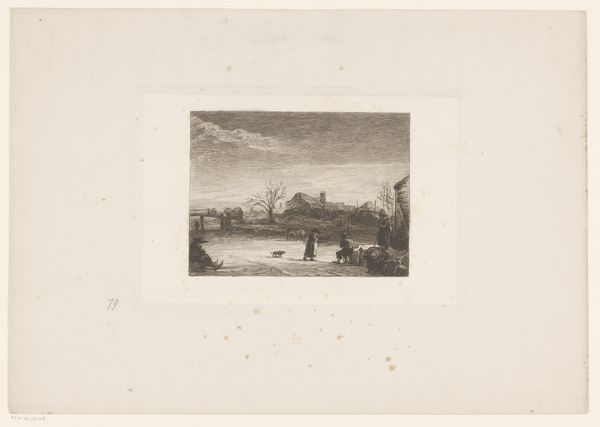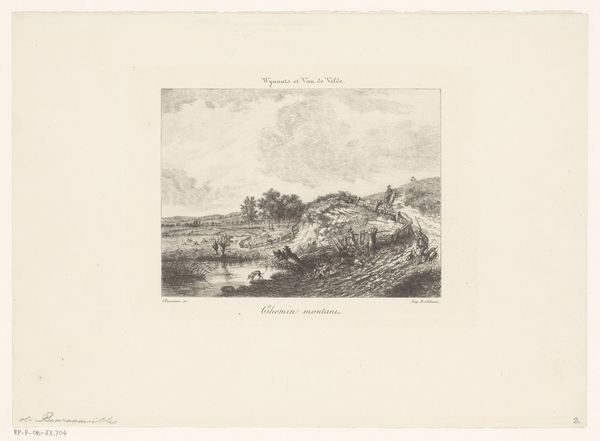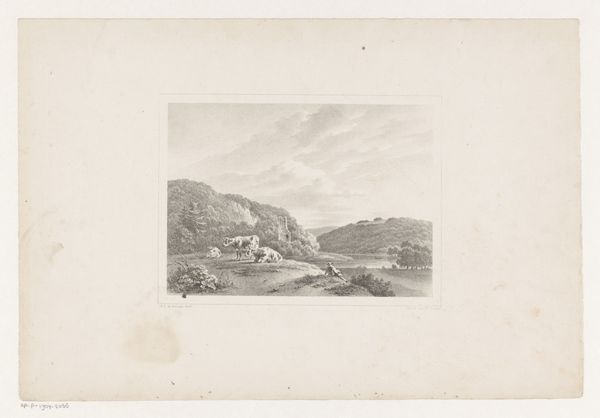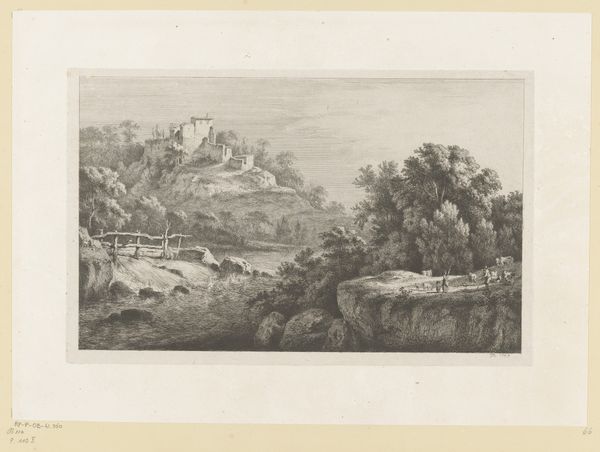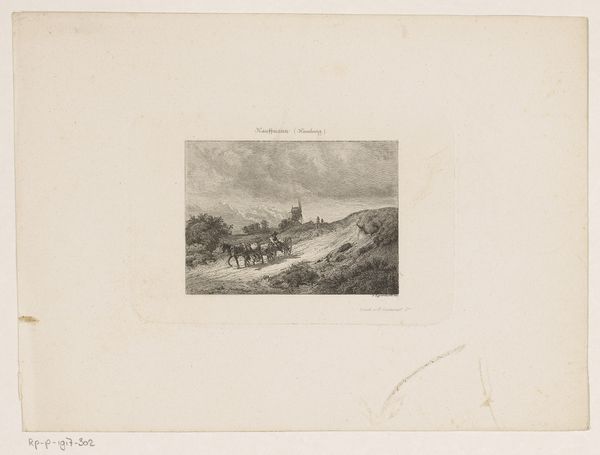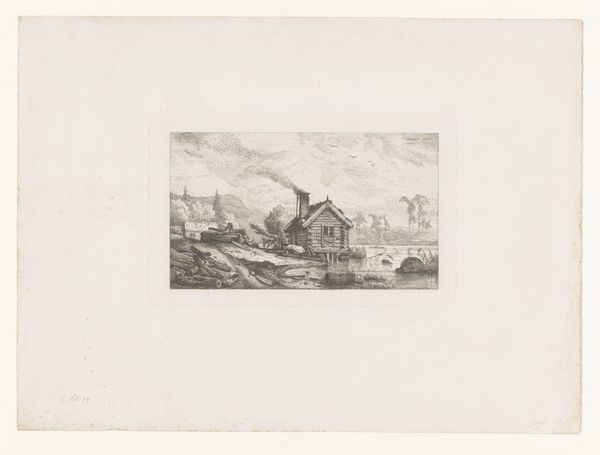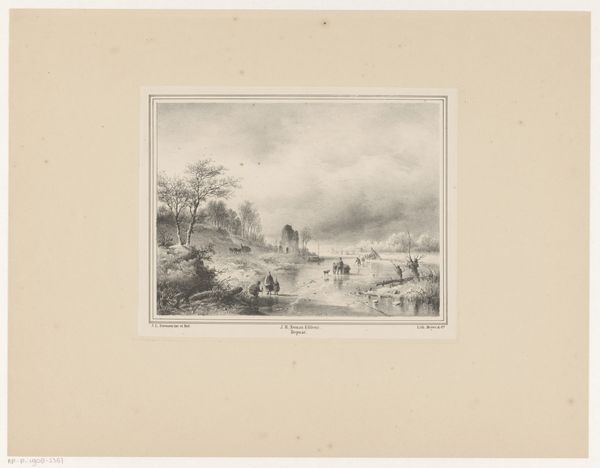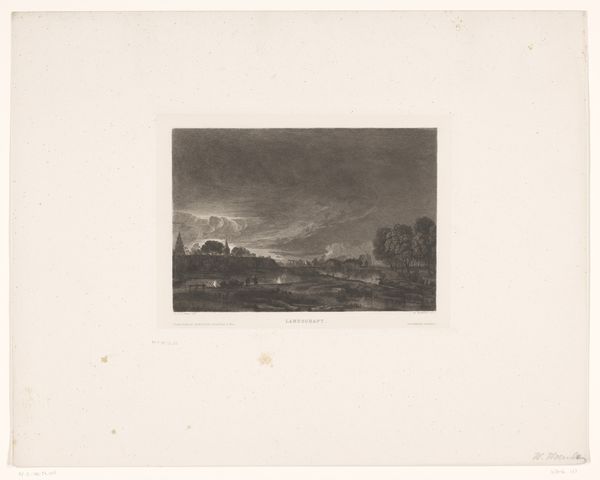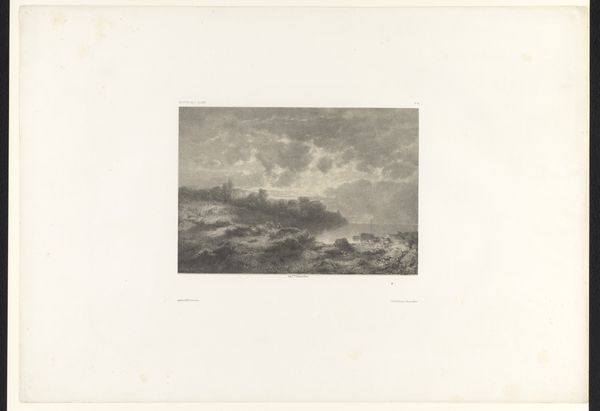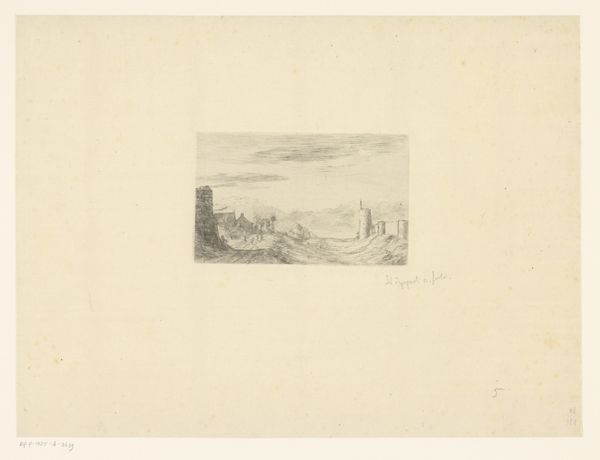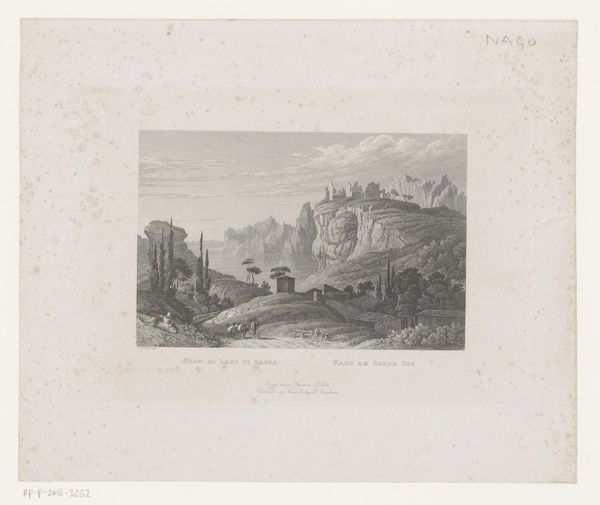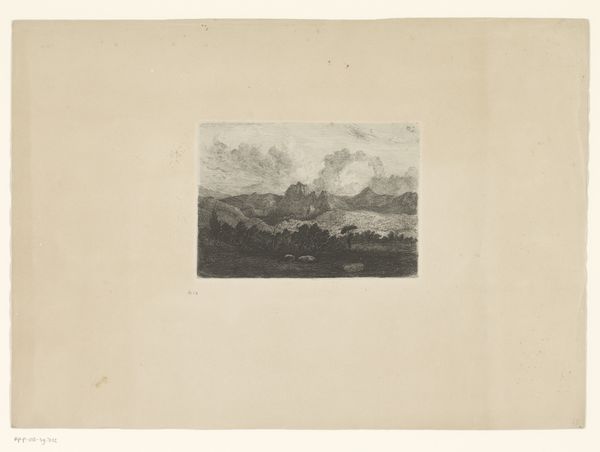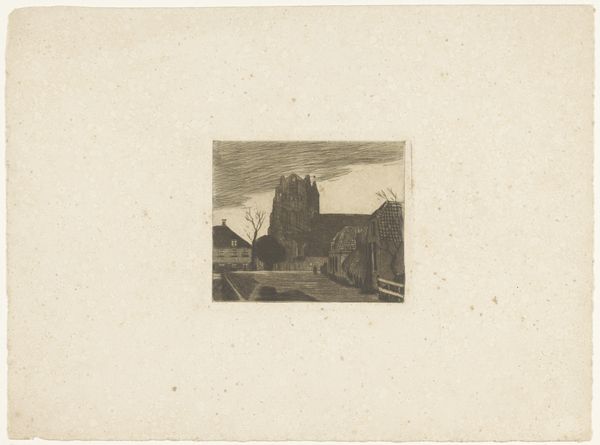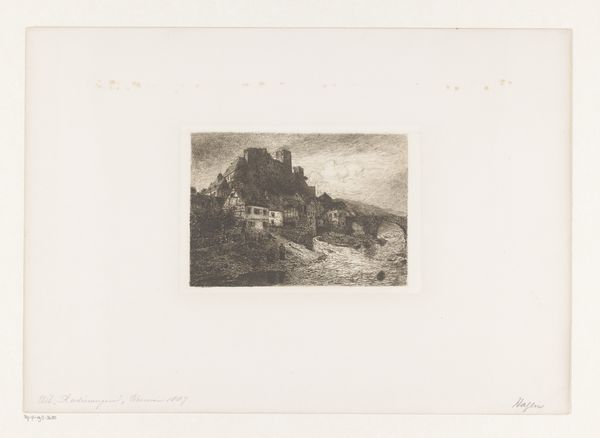
Dimensions: height 200 mm, width 275 mm
Copyright: Rijks Museum: Open Domain
William Unger made this etching, *Landschap met ruïnes op een heuvel*, using a metal plate, likely copper, to produce this print. The image is formed by incising lines into the plate, which then hold ink when the surface is wiped clean. Look closely, and you can see the crispness of the etched lines, creating a range of tonal values. The character of the etched line depends on the pressure, angle, and duration of the tool's contact with the metal. Unger would have needed significant skill to create the ruins, trees, figures, and reflections in the water with such subtlety and depth. While the scene evokes an older era, the printmaking medium itself was perfectly suited to the industrial age. Etchings could be reproduced in multiples and circulated widely, making art accessible to a broader audience. The labor-intensive craft of etching, therefore, intersected with the rise of mass media, democratizing art while still relying on highly skilled craftsmanship. Next time you look at a print, consider the many hands and processes involved in its creation, and how this affects the artwork's meaning.
Comments
No comments
Be the first to comment and join the conversation on the ultimate creative platform.
